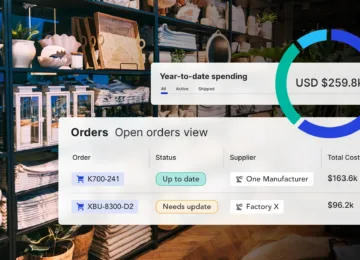Starting a business has never been easier. The number of D2C companies that sprung up in the past year is staggering and the expectations for growth in ecommerce suggest it is not letting up. While it may be relatively easy to start your own company, it is not easy to design a supply chain tech stack that will produce your product, attract customers, execute financial transactions and eventually scale.
The good news is there are a lot of options that can serve each aspect of your business – the tricky part is determining exactly what you need and when you need it. You need to focus on solutions that allow you to grow without being cost prohibitive or overkill for your objectives. For example, do you really need an ERP system right out of the gate or can I make do with a combination of niche systems, e.g. Google, Microsoft, Quickbooks, Gorgias, Klaviyo.
Supply Chain Technology Things to Consider
In order to pick what is going to serve you best, here are some things to consider:
- The type of product you are selling and the buyer you are trying to attract
- What do you want your brand to convey to the public
- How do you want to service your customers
- How complicated is your transaction – do you need a lot of support
- Are you pursuing a hybrid approach utilizing retail and online or just D2C
- What type of marketing are you planning…
The list is long but important to consider so you don’t implement technology that will be short lived. Fortunately a lot of software is close to plug and play, particularly for small companies, so if you make a mistake it wont be the end of the world. But, you want to make sure your customers will not be affected if it happens. Great customer service is one of the most critical elements of a successful business so don’t skimp on it.
The 4 Factors Explained
Here are some supply chain tech tips that we have learned and heard from our customers:
- Decide how you are going to handle orders. This includes how you can track and fulfill them, and how you communicate with your customer so you know they are satisfied. A Point of Sale (POS) or Ecommerce system is a must and so is a payment processor or gateway depending on who you choose.
- Choose a communication platform so you can easily share information with your employees, partners, and customers. Make sure you can answer customer questions in a timely manner. And, a customer support platform is equally as critical. Zendesk, Gorgias, and Kustomer are just a few of the options. Find one that fits your needs. Your brand depends on it.
- Find a way to manage or log what you have committed to, for whom, and how much still needs attention. The only way to do that is to track every business activity. In a time when speed to delivery is a must have, stock-outs have to be avoided or minimized. Forecasting and tracking inventory are paramount to doing so.
- Make sure you always have visibility into your financial situation. You can keep track of your expenses through AP software. This is good for any independent contracts and for supplier invoices. Having it sync to an accounting software is also important.
The Next Link in the Chain
These may seem obvious but founders struggle with it every day. If you go the route of separate systems, make sure you have a plan to integrate them. It won’t help if they can’t talk to each other. You will be manually tracking everything and that leaves a lot of room for error.



